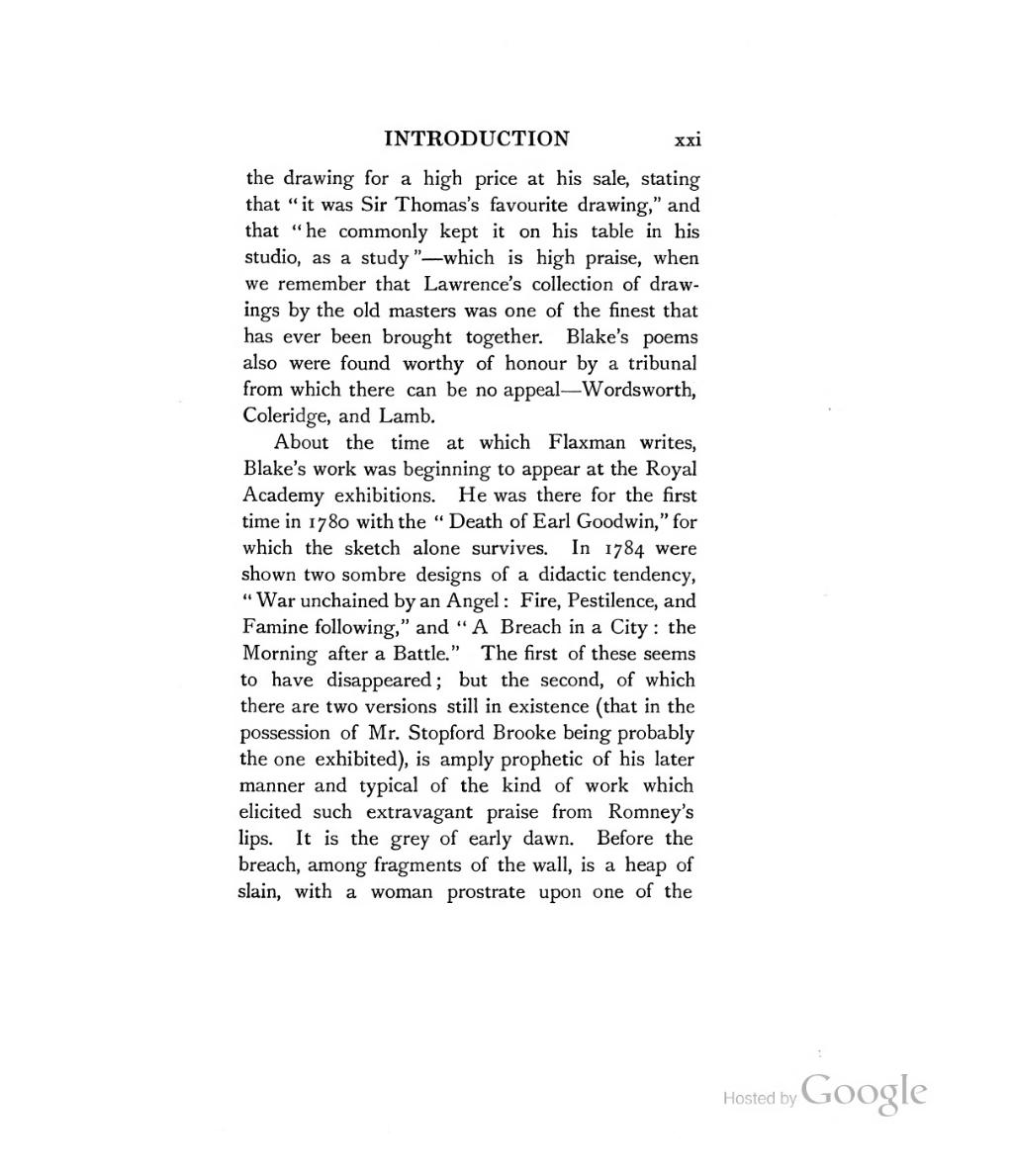the drawing for a high price at his sale, stating that "it was Sir Thomas's favourite drawing," and that "he commonly kept it on his table in his studio, as a study"—which is high praise, when we remember that Lawrence's collection of drawings by the old masters was one of the finest that has ever been brought together. Blake's poems also were found worthy of honour by a tribunal from which there can be no appeal—Wordsworth, Coleridge, and Lamb.
About the time at which Flaxman writes, Blake's work was beginning to appear at the Royal Academy exhibitions. He was there for the first time in 1780 with the "Death of Earl Goodwin," for which the sketch alone survives. In 1784 were shown two sombre designs of a didactic tendency, "War unchained by an Angel: Fire, Pestilence, and Famine following," and "A Breach in a City: the Morning after a Battle." The first of these seems to have disappeared; but the second, of which there are two versions still in existence (that in the possession of Mr. Stopford Brooke being probably the one exhibited), is amply prophetic of his later manner and typical of the kind of work which elicited such extravagant praise from Romney's lips. It is the grey of early dawn. Before the breach, among fragments of the wall, is a heap of slain, with a woman prostrate upon one of the
